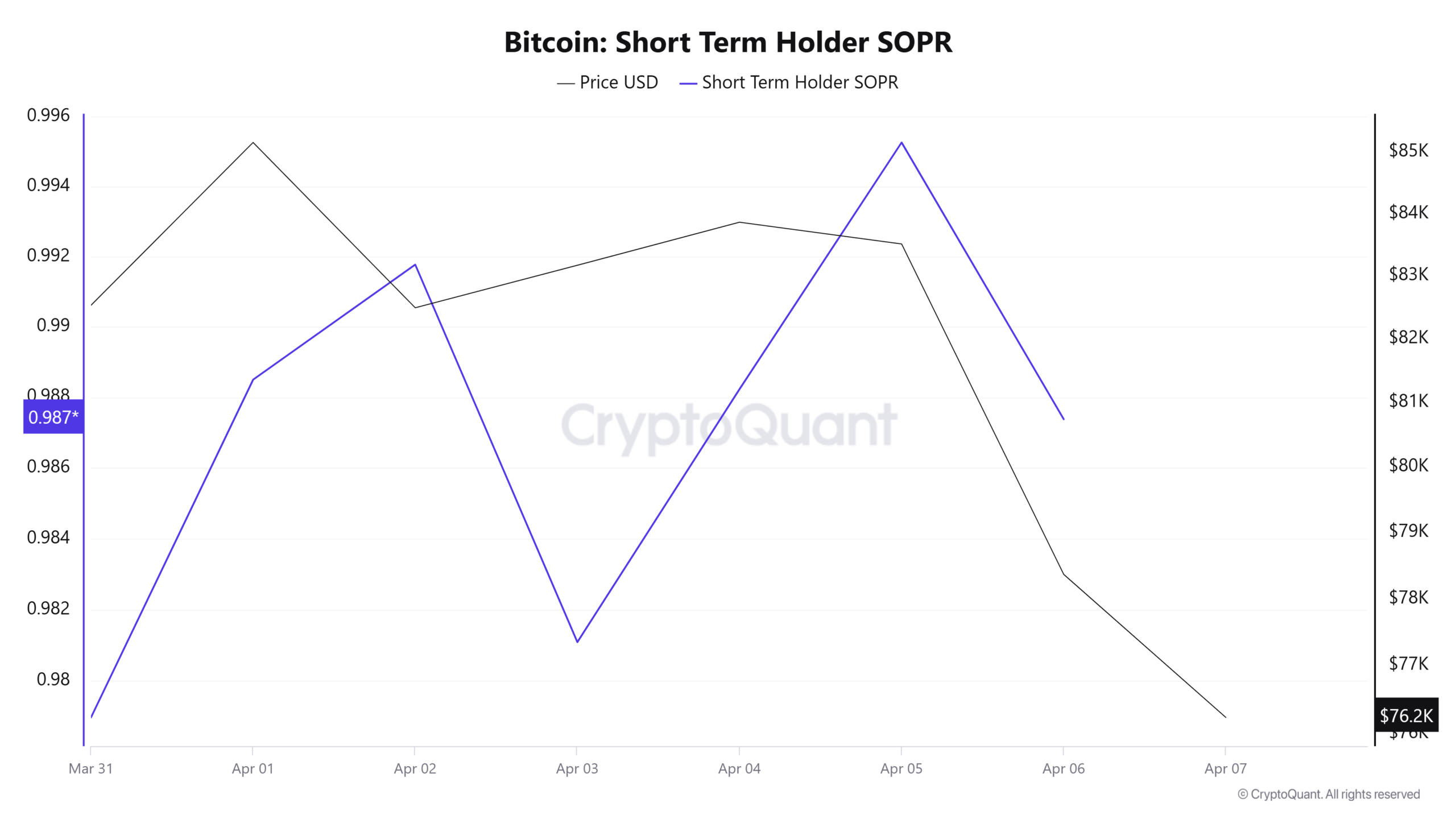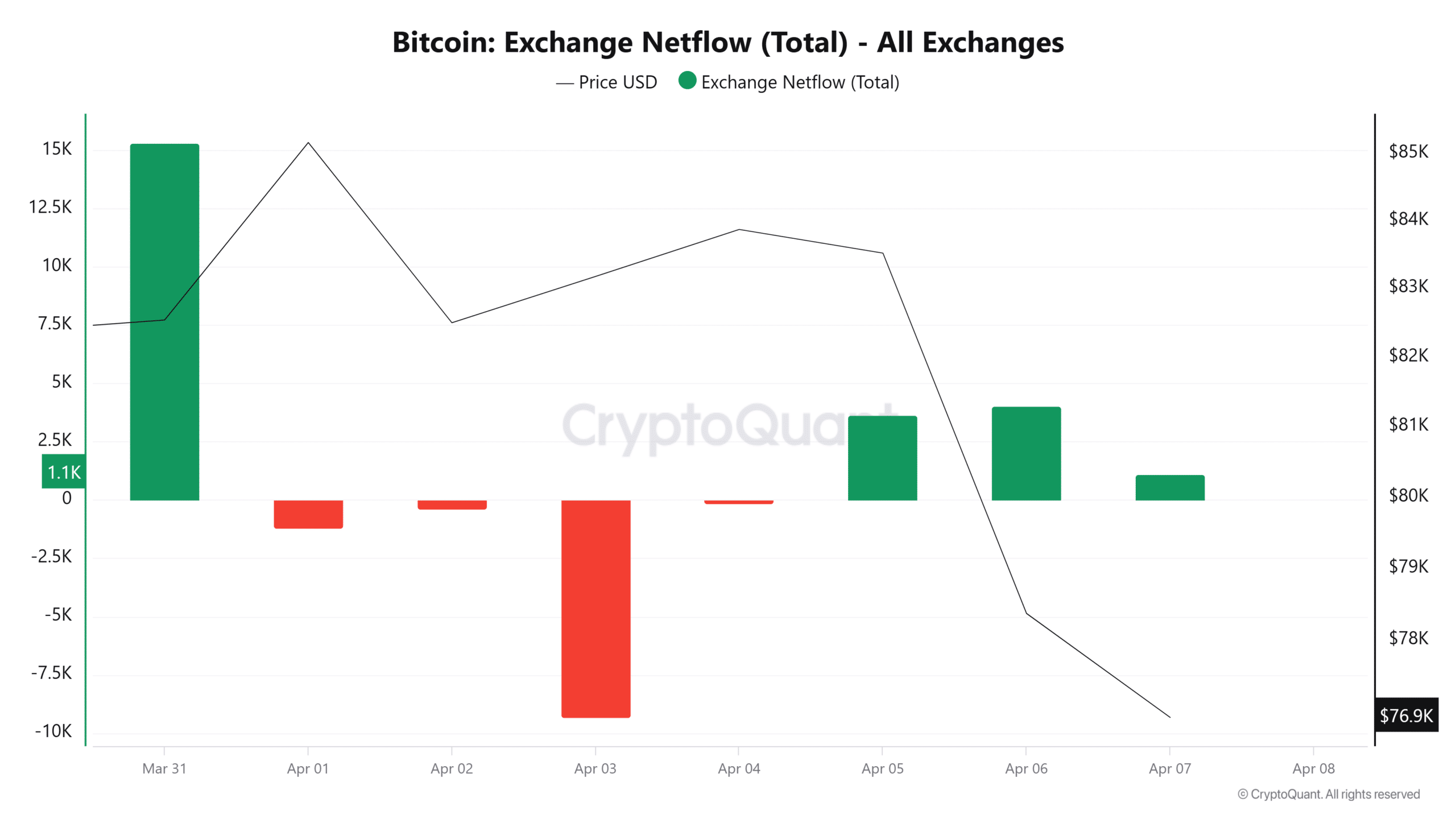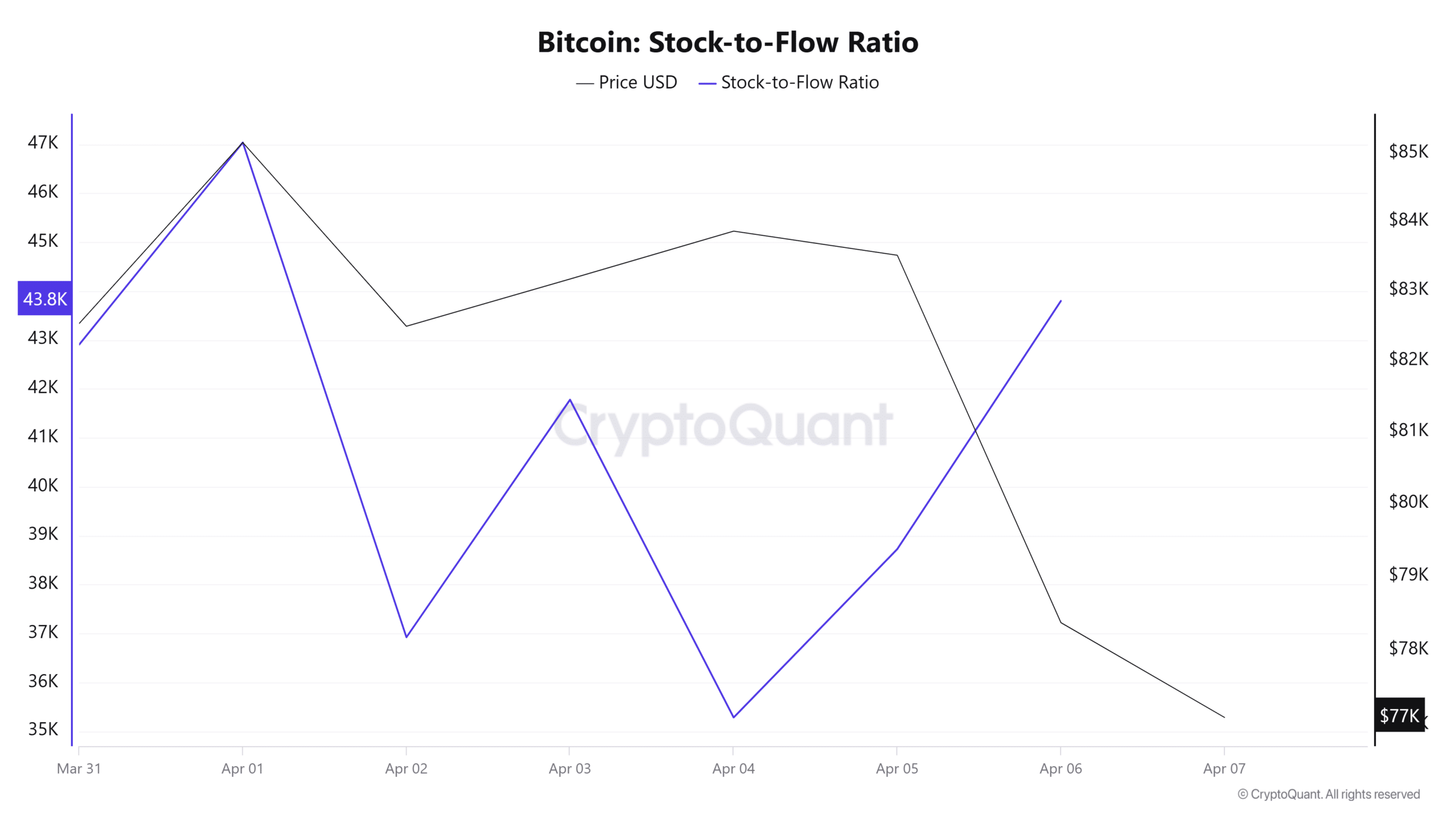-
Bitcoin faces a tumultuous period as short-term holders flee the market amid severe price drops, signaling a concerning trend for investors.
-
Over the past 24 hours, Bitcoin has seen a staggering decline, losing more than 6.88% of its value, pushing it closer to critical support levels.
-
“Historically, when STH-SOPR falls below 1.0, it indicates a mass realization of losses among short-term investors,” says CryptoQuant analysts.
Bitcoin’s value declines by 6.88% as short-term holders sell off in a panic, setting new lows and raising fears of further market corrections.
Short-term holders under pressure
As the market crashed over the last 48 hours, Bitcoin [BTC] saw a sharp decline on the charts and hit a 5-month low of $74k. Since breaking the key psychological level of $80k, short-term holders have been left in extreme panic.
In moments of heightened volatility, Short-Term Holders (STH) are often the first to react. Usually, they tend to exit the market to minimize losses.
Such behavior is effectively captured by the STH-SOPR. When the STH-SOPR falls below 1.0, it signals that short-term investors are realizing losses — a classic capitulation indicator.
Historically, a major price correction has accompanied a sharp drop in the STH-SOPR. In a notable case from 2024, the STH-SOPR fell below the -2 standard deviation band, sparking panic selling among STHs.

Source: CryptoQuant
Currently, the STH-SOPR has dipped below 1 to a reading of 0.98, indicating complete capitulation among short-term holders. This behavior suggests that recent buyers are closing their positions as they slip further into loss territory, positioning Bitcoin for potential downside on the charts.
Is the worst yet to come?
According to COINOTAG’s analysis, Bitcoin is currently experiencing significant bearish sentiment across market participants.

Source: CryptoQuant
Recently, Bitcoin has experienced three consecutive days of positive exchange netflows. Positive netflows indicate that there are more sellers in the market than buyers, with significant inflows into exchanges surpassing outflows, leading to increased selling activity.

Source: IntoTheBlock
Whales are also contributing to the selling pressure. The netflow to exchange netflow ratio for large holders recently spiked to 0.53% in the last 24 hours, indicating that whale activity has shifted towards selling. Such behavior among whales typically reflects decreased confidence in market conditions among larger investors.

Source: CryptoQuant
This sustained selling has led to a noticeable increase in Bitcoin supply. The stock-to-flow ratio climbed from 35.2k to 43.8k BTC in a single day. When the supply of an asset increases while demand remains stagnant, it typically leads to further price declines.
In the event that selling pressure continues and supply continues to rise, Bitcoin is at risk of even greater losses. If current conditions persist, a drop to approximately $71,858 is plausible. A bullish reversal will require Bitcoin to reclaim the crucial $80k threshold.
Conclusion
The recent uptick in selling activity among both short-term holders and larger entities indicates a deteriorating sentiment within the Bitcoin market. With the STH-SOPR signaling capitulation and netflows indicating more sellers than buyers, it remains to be seen how long this bearish trend will continue. Investors should closely monitor these developments to gauge potential recovery or further declines in the coming weeks.
